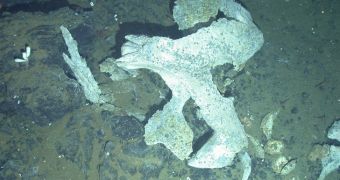Researchers have recently announced the discovery of a previously unknown crustacean species in the waters of the Antarctica. Oddly enough, it appears that these critters much enjoy living on bones originating from dead whales.
This new species of crustaceans was discovered by a team of British scientists. According to Live Science, these researchers stumbled across the critters while they were busy looking for hydrothermal vents at the bottom of the Southern Ocean.
The specialists detail that, at the time when they found the crustaceans, they were using a remotely operated vehicle (ROV, for short) to explore the ocean floor, the same source informs.
They further explain that, although their goal was to pin down hydrothermal vents, they could not help but notice some minke whale bones that appeared to be covered in surprisingly small creatures.
After using the remotely operated vehicle to bring some of these bones to the surface, the British researchers found that these creatures were little crustaceans. Later on, genetic tests revealed that they belonged to a previously undocumented species.
The newly discovered species has been named Jaera tyleri, and specialists say that it is related to other crustaceans that currently inhabit shallow waters of the North Sea. They detail that representatives of this new species measure just 0.15 inches (3.7 millimeters) in length.
Interestingly enough, no other crustaceans belonging to this species were found anyplace else except on the minke whale's bones, which they inhabited in numbers of about 500 to 6,000 specimens per square meter (about 11 square feet).
The scientists explain that, when they stumbled upon the minke whale bones in the Antarctica, they did not expect that they would end up identifying a new species. On the contrary, they only decided to examine the marine mammal's remains because such discoveries were few and far in between.
“You could never hope to find a whale fall on purpose – it would be like looking for a needle in a haystack. It gave us a rare opportunity to look at the ecology of these unique habitats, and which sorts of species settle on them,” specialist Katrin Linse with the British Antarctic Survey said in a statement.
By now, the scientific community has established that, after they die and sink to the bottom of the ocean, whales become a valuable source of nutrients for marine wildlife. Their bones, which take about a century to decompose, often end up housing a surprising variety of aquatic creatures.

 14 DAY TRIAL //
14 DAY TRIAL //